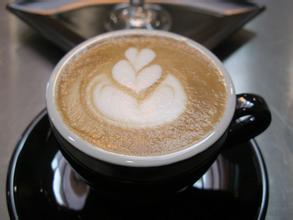Description of Panamanian Coffee Flavor with Flower Flavor in its aftertaste introduction to the taste of fine coffee in the producing area
Panama is rich in mineral resources, but it is not exploited much, and the scale of the mine is small. The main minerals are gold, silver, copper, iron, mercury, bauxite, manganese, salt, oil and so on. The reserves of copper, salt and bauxite are relatively large. As of 2013, Panama has more than 200m tons of copper ore, ranking fourth in the world. The proven copper reserves can be exploited for 50 years. The Panamanian flag was launched on November 3, 1904. The flag is rectangular, with an aspect ratio of 3:2. The flag consists of four rectangles of white, red and blue. White symbolizes peace; red and blue represent the former Panamanian Liberal Party and the Conservative Party respectively, and they are also symbols of the two parties' United struggle for the interests of the nation. The blue star on the white background at the top left represents loyalty and integrity, while the red star on the white background at the lower right represents the authority of the law. The design of the crosshairs divided into four pieces represents that Panama is located at the junction of South America, North America, Atlantic and Pacific Ocean. Red, blue and white are the colors of the American Stars and Stripes that support the independence of Panama. This flag was designed by Manuel Amador Guerrero, the first president of Panama. The condor is Panama's national bird. It is the heaviest of all kinds of eagles. This kind of eagle has several upright feathers on its head, which looks like horns from a distance and is very powerful.
The BOQUETE region of Panama, located in the province of CHIRIQUI on the border with Costa Rica, is the home of Panama's famous GEISHA coffee and is famous for producing high-quality Arabica coffee. The Tedman & McIntyre (TEDMAN&MACINTYRE ESTATE) estate, located in the mountain area of Poggett 4000 feet above sea level, comes from the two earliest coffee families in Panama, the Tedman family and the McIntyre family. In 1925, Canadian fruit merchant Alexander McIntyre (ALEXANDER DUNCAN MACINTYRE), infected by his brother Joseph, came to Poggett to settle down, married ANGELA ROSAS in the same year, bought an estate named "LA CAROLINA" and began to grow coffee. Their descendants still own the estate and become one of the most famous coffee farms in the area.
As a matter of fact, Panamanian coffee has not been given due recognition and attention in the boutique coffee market. Good Panamanian coffee has always been used by unscrupulous businessmen to imitate Hawaii kona coffee and even Jamaican Blue Mountain coffee. Panamanian coffee generally belongs to the low and medium price, but its performance in the cup is often not inferior to that of any famous or even expensive coffee producing area. Excellent Panamanian coffee flavor is bright, pure, medium consistency (taste, body) comfortable and mild, and even has excellent complexity. In a few years, these high-quality, reasonably priced boutique Panamanian coffee will be popular all over the world!
Introduction to Panamanian boutique coffee beans-Geisha
Panamanian Rose Summer: a rare wild variety, the champion and regular guest of various tasting competitions in the world. The appearance of raw beans is slender, ripe beans have unexpected citrus aromas, and the aftertaste is full of flowers and sweet fruit. Absolutely unique boutique coffee.
Rosa originated from a very rare wild species in Ethiopia, and the beans may be named after this coffee bean found near the local village called Rosa. The coffee tree is tall, its leaves are slender, and it is not afraid of coffee rust. It is characterized by a wide gap between branches on the trunk. The appearance of raw beans is slender and ripe beans have strong and strong fruit aroma characteristics. Because the harvest of this variety is very low, it can not be purchased by commercial trade.

Important Notice :
前街咖啡 FrontStreet Coffee has moved to new addredd:
FrontStreet Coffee Address: 315,Donghua East Road,GuangZhou
Tel:020 38364473
- Prev

Flavor description of Costa Rican Tarazhu Coffee with mellow taste introduction to the characteristics of producing areas
Costa Rican coffee has obvious acidity, acidity is strong, but not irritating and divergent, the whole mouth will be filled with this fruit-like sweet and sour aroma. The bitterness is not very obvious, but it has a beautiful return. There is no astringent taste, the overall taste is very pure and balanced, making people feel very soft. If you wait until it is a little cooler before tasting it, the sour taste will become more obvious.
- Next

Flavor description of Indonesian Mantenin Coffee with strong Flavor introduction of Fine Coffee beans in producing areas
Indonesia is also the producer of the world's most expensive coffee, known as Kopi Luwak. The historical origin of Kopi Luwak is as interesting as its taste. The authentic Kopi Luwak collects the droppings of wild raccoons (common raccoons, coconut raccoons), which are nocturnal in coffee plantations, foraging for well-ripe coffee beans. But it can't digest rocks, cafes and cherries, so these cherries
Related
- Detailed explanation of Jadeite planting Land in Panamanian Jadeite Manor introduction to the grading system of Jadeite competitive bidding, Red bid, Green bid and Rose Summer
- Story of Coffee planting in Brenka region of Costa Rica Stonehenge Manor anaerobic heavy honey treatment of flavor mouth
- What's on the barrel of Blue Mountain Coffee beans?
- Can American coffee also pull flowers? How to use hot American style to pull out a good-looking pattern?
- Can you make a cold extract with coffee beans? What is the right proportion for cold-extracted coffee formula?
- Indonesian PWN Gold Mandrine Coffee Origin Features Flavor How to Chong? Mandolin coffee is American.
- A brief introduction to the flavor characteristics of Brazilian yellow bourbon coffee beans
- What is the effect of different water quality on the flavor of cold-extracted coffee? What kind of water is best for brewing coffee?
- Why do you think of Rose Summer whenever you mention Panamanian coffee?
- Introduction to the characteristics of authentic blue mountain coffee bean producing areas? What is the CIB Coffee Authority in Jamaica?

